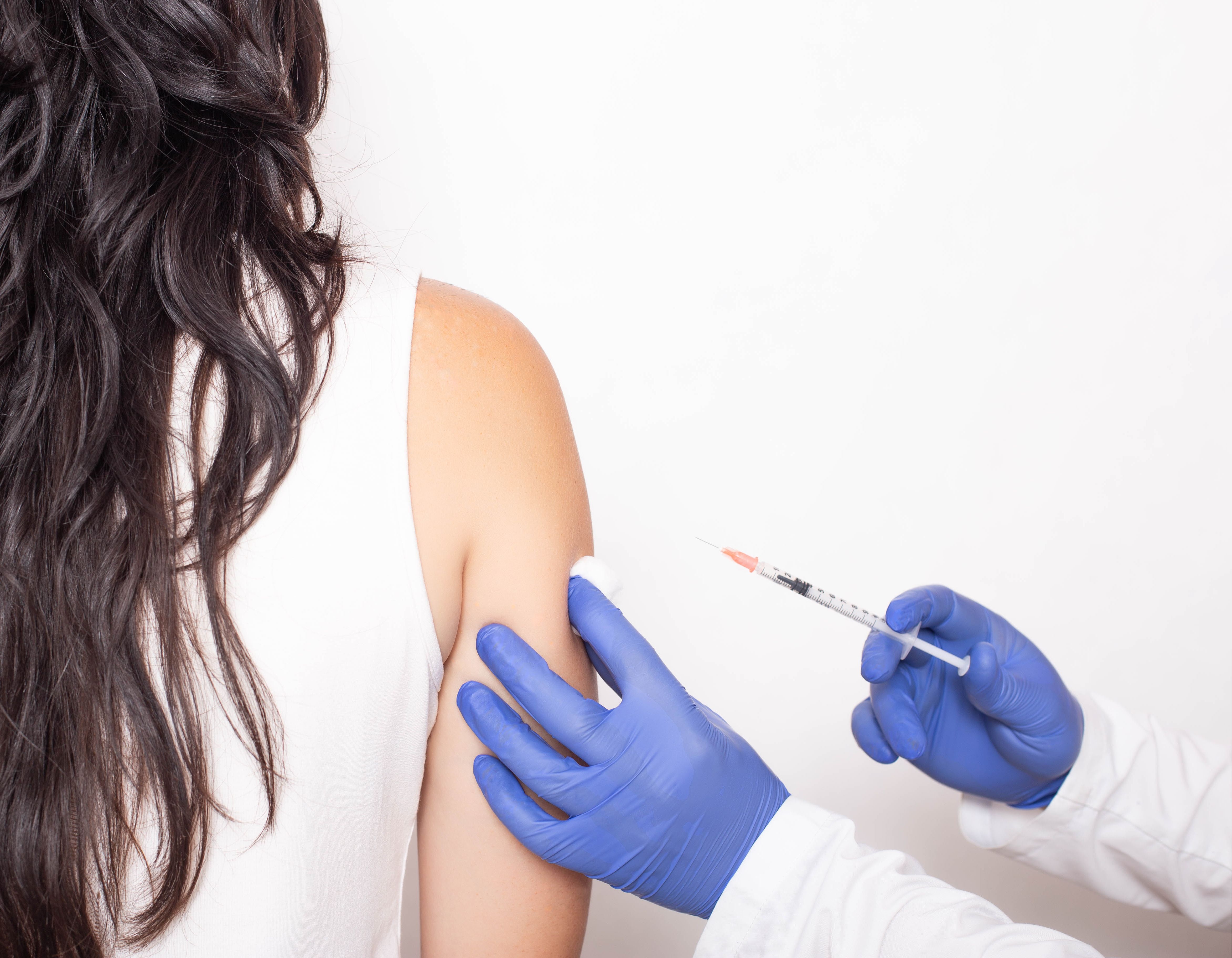News
Article
Posters Present Improved Survival, Safety and Efficacy Results in IMM-101, LAB Vaccines
Author(s):
Researchers provide progression-free survival outcomes for a pancreatic cancer vaccine and safety and efficacy results for a peptide vaccine alone or in combination with pembrolizumab.
Two posters presented at the Society for Immunotherapy of Cancer (SITC) 38th Annual Meeting provide improved progression-free survival outcomes for collagen remodeling biomarkers with stereotactic body radiotherapy (SBRT) and intradermal heat-killed mycobacterium obuense (IMM-101) vaccination, and good safety and efficacy results for assays detecting labyrinthin-positive adenocarcinomas of a peptide vaccine LabVax.

The first study found treatment with SBRT in combination with IMM-101 was associated with decreased levels of the tumor fibrosis biomarker (PRO-C3) and increased T-cell infiltration biomarker (C4G) levels.1
This study was conducted among patients with non-progressive locally advanced pancreatic cancer (LAPC) after treatment with folfirinox, a combination treatment used to treat pancreatic cancer and bowel cancer. These patients were treated with SBRT and IMM-101 vaccination, which was found to induce immune activation in the peripheral blood, and correlated with progression-free survival. In this study, the researchers aimed to evaluate the predictive value of 3 circulating collagen biomarkers reflecting PRO-C3, C4G, and tumor invasion (C4M) for response during SBRT/IMM-101 in patients with LAPC.
Patient collagen information was measured at baseline and at 5 time points during treatment with immunoassays in serum from 36 patients with LAPC treated with SBRT and 6 intradermal IMM-101 vaccinations. Additionally, the researchers compared levels of collagen biomarkers with 43 healthy controls.
The assays showed both PRO-C3 (P < .0001) and C4M (P = .0008) were significantly elevated in patients with LAPC at baseline compared with healthy controls. Additionally, the median PRO-C3 levels decreased after 3 (P = .020), 4 (P = .023), and 5 (P = .002) doses of IMM-101. However, median C4G increased after 1 dose of IMM-101 (P = .0017) and levels remained high during the treatment, but C4M levels did not change. Furthermore, the C4G/C4M ratio increased after 1 dose of IMM-101 (P = .022), with the highest increase during treatment found in patients with partial response compared with patients with stable and progressive disease.
Therefore, the researchers believe collagen remodeling biomarkers could be predictive in patients with pancreatic cancer treated with immunomodulatory therapy such as SBRT with IMM-101.
The second study aimed to establish biomarker assays to identify patients for a first-in-human phase 1/2 trial (NCT051013560) of peptide vaccine LabVax 3(22)-23, a novel anti-tumor vaccine, alone or in combination with pembrolizumab.2
LabVax contains 4 synthetic labyrinthin-based peptides designed to elicit both B-cell and T-cell responses.
The assay for labryrinthin (LAB), a novel cancer neoantigen, was developed using a mouse monoclonal anti-LAB antibody MCA 44-3A6 (HB-8986TM, ATCC). The researchers scored LAB expression on tumor cells by percentage and intensity on sections of tissue microarrays from 256 non-small cell lung cancer (NSCLC) and 97 breast cancer tissue blocks and assessed LAB-specific mRNA expression from The Cancer Genome Atlas dataset. These findings were then validated in an independent clinical next generation sequencing (NGS) dataset of patients with adenocarcinoma and selected tumor samples by immunohistochemistry (IHC) expression.
LAB was expressed in 105 (82%) of the 128 lung adenocarcinoma (LUAD) datasets as an independent poor prognostic factor. A high prevalence of LAB expression was also identified in 93 (95.8%) of 97 breast cancer samples.
The IHC assay was used to detect LAB expression on 11 (91.7%) of 12 patients who were screened for the phase 1 trial. Additionally, LAB RNA was expressed in both oncogene-driven and non-oncogene-driven adenocarcinomas. Furthermore, LAB RNA expression was positively correlated with PD-L1 RNA expression across LUAD subgroups, with good correlation between RNA sequence expression with IHC expression in these initial 10 patients.
Although further studies are needed to validate these results, the researchers believe the study was able to establish IHC and RNA assays to identify patients with LAB-positive adenocarcinomas in the ongoing study on the safety and efficacy of the LAB vaccine in combination with pembrolizumab.
References
1. Jensen C, Land F, Karsdal M, et al. Collagen remodeling biomarkers in patients with locally advanced pancreatic cancer treated with stereotactic body radiotherapy plus intradermal heat-killed mycobacterium obuense (IMM-101) vaccination. Poster presented at: SITC 2023; November 1-5, 2023; San Diego CA. http://dx.doi.org/10.1136/jitc-2023-SITC2023.0040
2. Ma W, Long S, Montoya D, et al. Novel biomarker assays for detecting labyrinthin-positive adenocarcinomas for a phase I/II trial of peptide vaccine LabVax 3(22)-23 alone or in combination with pembrolizumab. Poster presented at: SITC 2023; November 1-5, 2023; San Diego CA. http://dx.doi.org/10.1136/jitc-2023-SITC2023.0040




